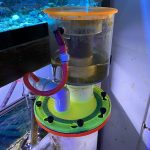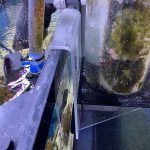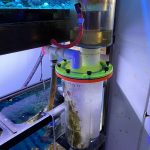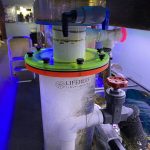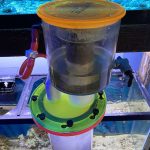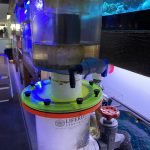Protein skimmers are one of the most effective forms of nutrient reduction in a saltwater aquarium, and one of the most unique pieces of equipment for a reef tank. They work by combining lots of fine air bubbles with aquarium water into a contact chamber of various dimensions, the air being provided by a few different methods.
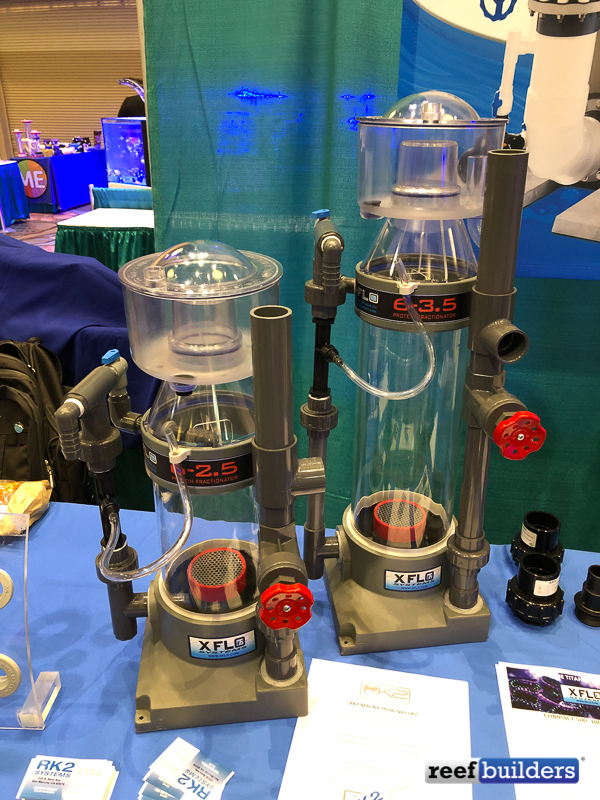
In the early days, skimmers were provided with air simply by pumping air into wooden block airstones, but the first revolutionary improvement was the introduction of true venturi valves after the pump feeding water into the skimmer body. These days nearly all consumer/hobbyist protein skimmers are powered by needle wheel pumps with air injected before the pump but the largest commercial skimmers are predominantly still using the old and faithful venturi air injection technique.
We’ve been keeping an eye on this trend for years and considered what it is about venturi protein skimmers that has lasting appeal for certain applications. This week we did some window shopping online and we could only find ONE manufacturer still making a venturi protein skimmer, and this is the acrylicsmiths at LifeReef.
As a native of the Colorado reef aquarium scene LifeReef has been a fixture and mainstay in our local area since the late 90s. LifeReef still makes their venturi skimmers more or less the same way today as they did when we were a teenage reefer. There’s lots of benefits to using needle wheel skimmers, especially for small tanks, but we’ve lost sight of some of the benefits of well-designed, thoughtfully engineered venturi skimmers that most needle wheel injected models mostly lack.
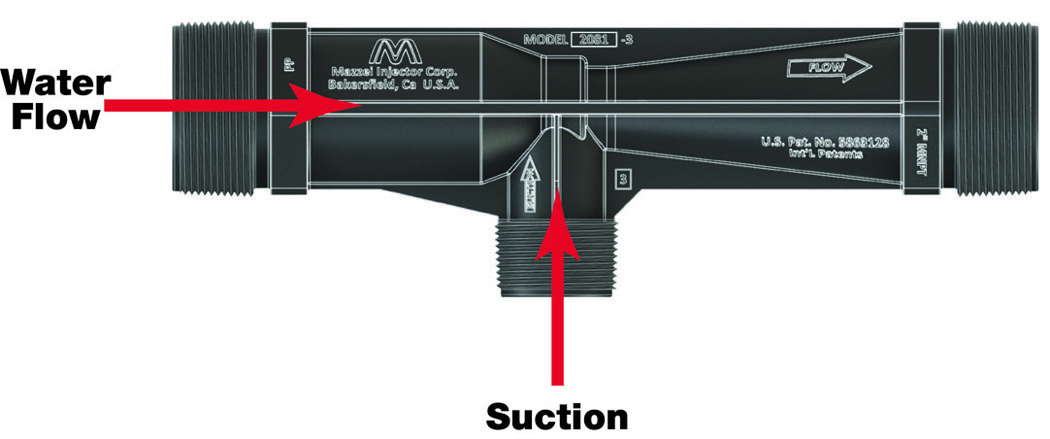
One of the lasting features of the venturi protein skimmer is that they can be powered using any pump, whereas most needle wheel skimmers are paired up with a specific pump; once it goes out or something goes wrong, you really need to find the same pump to keep using that skimmer. Furthermore, we already know from asking many of our readers and watchers that many people don’t clean their skimmer pumps, some almost never, which leads to terrible performance or worse, pump failure.
A properly tuned and clean needle wheel pump can inject an order of magnitude more air into the skimmer body but they can’t do this with any significant head pressure, which is why virtually all needle wheel skimmers have short, squat bodies. The hobby has collectively fixated on air, Air, AIR but there’s a whole lot more to protein skimming than just injecting a whole bunch of air into the skimmer body.
By far the biggest tradeoff has been the near total loss of contact time, making Ozone use much less effective, and probably failing to remove the ‘heavy proteins’ that need more time to adhere to bubble surface than ‘light proteins’. The other thing we’ve lost by going all needle wheel is simplicity – we personally love turning, tweaking and adjusting the pump, water level, and air intake of our various skimmers but the task of properly adjusting a needle wheel skimmer is much more daunting for new reefers.
As much as we still have love and respect for venturi driven skimmers in certain applications, don’t throw away your needle wheel pumps just yet! Driving the venturi valves of LifeReef and commercial skimmers takes a pretty strong pump with high pressure. These powerful pumps use significantly more energy than a basic hobbyist needle wheel skimmer and you’ll need a nice tall skimmer body to truly reap the benefits of long contact time.
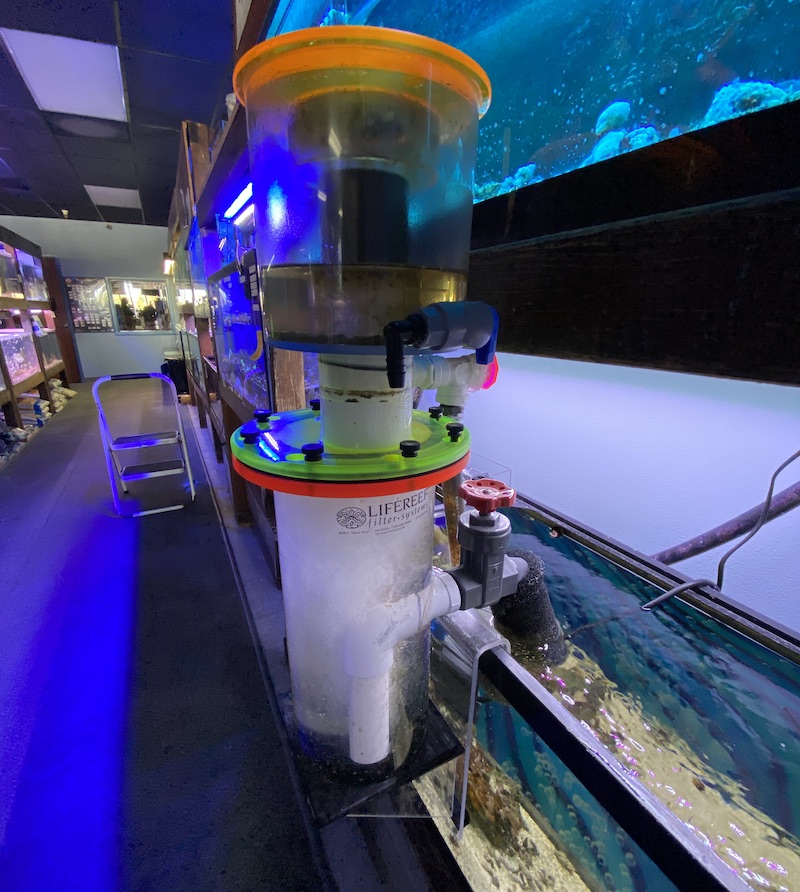
The range of saltwater and reef tanks for which we would actually recommend a venturi over a needle wheel is quite narrow. However, just like lighting, dosing, and every other ‘service’ required of fully featured reef tanks, the application really determines what device will likely work the best.
We don’t buy into all the ‘absolute’ critical claims that LifeReef makes against the needle wheel protein skimmers – after all they are the technology powering 99.99% of hobbyist reef tanks. But we are glad that at least one company is still championing a technology that revolutionized the use of protein skimmers in saltwater aquariums, and which is still the better choice in certain hobbyist applications and especially commercial scale protein skimming.



